Sunday, 24 April 2011
Shot List Of 'The Missing'
2) Panning Shot - of William as he walks into the elevator room.
3) Close up / Low Angle Shot - of Williams back as he stands within the elevator.
4) High Angle / Over The Shoulder Shot - of Willaims looking down at the villain from a balcony.
5) Wide Shot - of William as he sees the villain and flees.
6) Long Shot - as William runs through tunnel.
7) Panning Shot / Wide Shot - as news reporter broadcasts.
8) Tilt Shot - as William runs down staircases.
9) Extreme Close Up / Cutaway Shot - of Blackberry revealing Lucy's name.
10) Establishing Shot - as William runs over bridge.
11) Two Shot - as news reporter interviews Lucy.
12) Backwards Tracking Shot - used as William runs into tunnel.
13) Forwards Tracking Shot - used as William runs through tunnel.
14) Panning / Slanted Shot - used as William runs towards door.
15) Close Up - as William goes through the door.
16) Shaky Cam / Point Of View Shot - used to show protagonists movements.
17) P.O.V Shot - used again as villain attacks William.
Friday, 15 April 2011
Michaels Personal Account Of The Group And Tasks
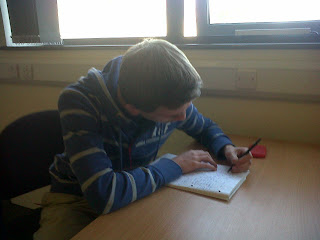
In what ways does your media product use, develop or challange forms or conventions of real media products?

In our group we have develepoed an urban British film. The film we have produced came from ideas from watching Shaun Of The Dead, Mirrors and The Messenger. These are a mixture of thrillers and horrors we wanted to base our main task on. However we chose to mainly focus on the films Mirrors and Shaun Of The Dead.
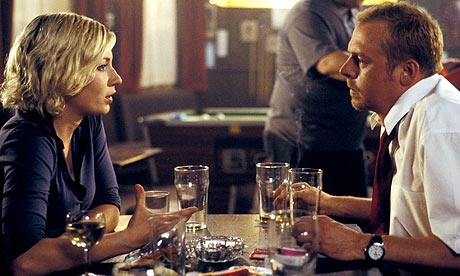
We also used the idea of relationships to do this we looked at the film Shaun Of The Dead. In this film the protagonist Shaun has an issue in his relationship with his girlfriend Lizzie. We used the consept of broken relationships but put a twist on it so that the girlfriend was not seeing her boyfriend and being distraught due to him being missing. This takes the idea of broken relationships but in a different direction.
How does your media product represent particular social groups?
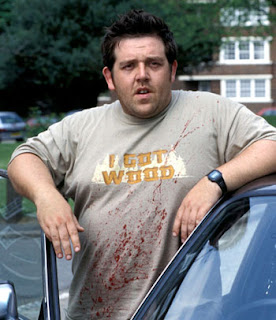
In our product we enabled the working class to seem inferior and vunerable in a way that it was typical for a working class male to go missing, we also used a female news reporter on purpose to show a middle class fem
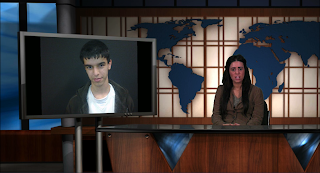
What Kind Of Media Institution Would Distribute Your Media Product And Why?


Wednesday, 13 April 2011
Looking Back At Your Preliminary Task, What Do You Feel You Have Learnt In The Progression From It To The Final Product?
We learnt how to work together and how to time our production. We needed to move to our locations and to do so needed to be organized in who took what and where we went. There were no fallouts and the entire movie went smoothly. This is in contrast to our 'Prelim Task' where we didn't know what was going on and who was doing what. Everything came with slight spontaneity compared to our 'Final Task' where everything was organized and thought about before hand.
However, one of the most important things we learnt in the ‘Final Task’ in comparison to the ‘Preliminary Task’ is that we should not cut heads off the shot. This is vital as it makes a good film great and ruins most of the shots. As you can see from the ‘Prelim’ (left side) Michaels head has been cut off as the protagonist (this is one example from many other shots). To correct this we added extra room for a professional touch and to ensure we did not cut off his or any other characters head (right side).
As well as this we also ensured that the image looked sharp and professional. The movie we wanted to make had to look better and the overall feel of it had to be too. Its key for making a good film and making everything look better. As you can see in the ‘Prelim’ the shots were blurry and at times untidy due to the fact we didn’t check the lighting and misused the tripod for multiple shots. You can see the sharper image quality in the ‘Final Task’ making it more authentic.
We were fairly happy with our shots during the production of our ‘Preliminary Task’ however, we became ambitious with our ‘Final Task’. We didn't want an outside shot near a chapel, we wanted one near a river in the middle of the city. Also we didn't want our protagonist to see the villain suddenly and the build up to not be as dramatic. So we took a car park and placed the villain in various shots around the area to make everything bigger and more ambitious. The following shots show the diff erences in what we wanted to accomplish and what we went for. This was helped by our choice of locations which were a lot better in comparison to our ‘Preliminary Task’.

What Have You Learnt About Technologies From The Process Of Constructing This Product?
To complete the film we first had to film the footage. In many aspects this was one of the most important sections of the entire project. To pick the right shots would set the film and its course and if it were to go wrong the editing process would become a failure. We needed to ensure our camera crew were organized and ready to tackle any situation. Our main camera team consisted of Lucy and Kelsea, more dominantly. To quote Kelsea had stated that “We had to make sure that the camera shots would match for the final edit and that we didn’t cut off any heads or important details this time round” Lucy also stated that “I learnt that the lighting effected the camera so we had to change and adapt to different environments to make sure the film looked good in association to the lighting keeping it dark as it’s a thriller”.
To convert the footage to fit into ‘Final Cut Pro’ we had to put it through the main
converter and make sure that the format and footage was the right size to do so. As you can see from the picture it
looks fairly complicated but we managed to find an easy way round it and transport all footage to the right codec so you can use it in ‘Final Cut Pro’. We also had to convert sound effects and music into the film to give it more soul and life. This was a difficult task and needed to be done by someone who had advanced IT skills to navigate. Michael was in charge of converting, computing and importing music states that “I found it efficient yet challenging at times in the means of setting the correct measurement and the format to put the filming in”.
When we eventually got onto ‘Final Cut Pro’ where we very unsure about what to actually do. However we caught on fairly quickly and got used to the program, this is mostly thanks to the ‘Preliminary Task’. Despite this we must ensure that all parts fitted together, synced perfectly and had no lags. We needed someone creative to do so. Koceila, who was the main editor, states “The software was tricky at first I have to say, but when the shots were in and the story was set the editing process was fun, enjoyable and easier then expected”.
We also used various helpful tools such as green screen. This was a huge advancement as we never used it before. To get the hang of it we needed help and when we got used to it we film it perfectly and fine. We had to get used to cropping with the videos and effects to make the shots fade in and out of each other and sync. Also the titles had to be done separately and had to be placed in correct areas. We did this by using the screen crop of the predicted cut off parts if imported out. This means our titles were still in frame and still looked good.
How Did You Attract / Address Your Audiance
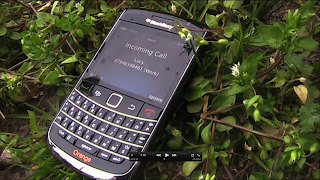
We did this by editing the film with speed and addressing issues such as peoateple going missing that is mostly relatable to people aged 15 – 30. We also picked the genre of thriller. This genre attracts our target audience and with the modernization of the film i.e. music, mise-en-scene and setting we achieved this brilliantly. One of our pieces of technology was a Blackberry Smartphone. The average teenager and young adults have this gadget meaning its appeal will be huge to our designd target audience.
The character that goes missin g, William Fisher, is a male aged 24. The aim of this is to leave ambiguity between the viewers to interpret why he is actually running. The fact William is 24 means people can relate to the character and the added touch of him having a girlfriend also does so. This will attract a female audience to what appears to be a very male dominated film with the actors Koceila and Michael taking more dominant roles within the movie. Therefore giving Keslea the role as news anchor means it counter acts the dominated gender type. Making Lucy the vulnerable girlfriend means that Koceila had to take the role of victim to balance out the gender stereotype ratio making the film appeal to both sexes.
g, William Fisher, is a male aged 24. The aim of this is to leave ambiguity between the viewers to interpret why he is actually running. The fact William is 24 means people can relate to the character and the added touch of him having a girlfriend also does so. This will attract a female audience to what appears to be a very male dominated film with the actors Koceila and Michael taking more dominant roles within the movie. Therefore giving Keslea the role as news anchor means it counter acts the dominated gender type. Making Lucy the vulnerable girlfriend means that Koceila had to take the role of victim to balance out the gender stereotype ratio making the film appeal to both sexes.
We also added a ‘Parkour’ sequence to make it more urban and more youthful as its energetic and means the movie contains more action. As you can see by the picture the protagonist William is leaping over a banister in the middle of Manchester City Centre. This urban environment is why it attracts our target audience.
Friday, 8 April 2011
Who would be the auidence for your production?

It also promotes that the target audience is above the age of 15, being this the target range could not be more than 15-30 because it gives film the fifteen year age gap who would like a horror film. The film would target both a male and female orientated audience as the main protagonist is a male and the fictional elment of the following character suits a males imagination and it can appeal to females as in the film it reflects a dominating role in society (e.g the news reporter) also the girlfriend of the main protagonist reflect the sense of emotion which can reflect on some females as woman are usually the sterotypical naturing type and are known to show more emotion than men.


















